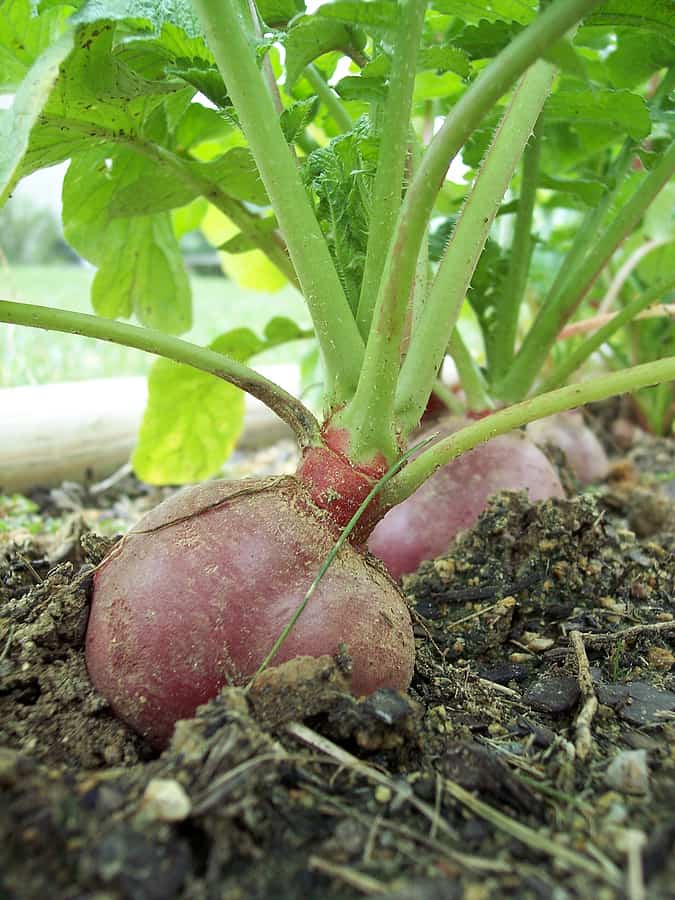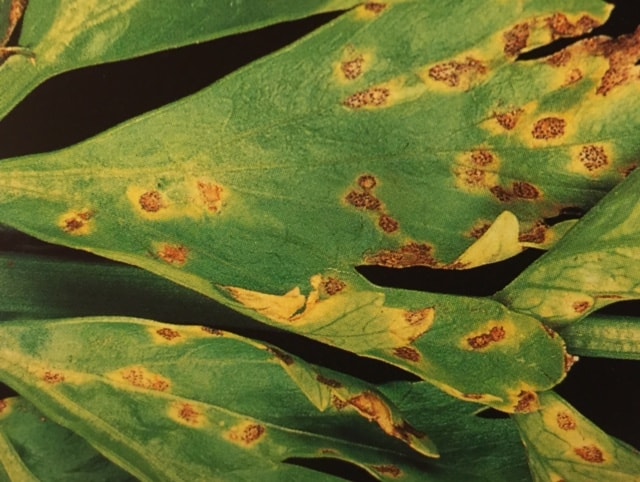Damping Off Plant Disease
Damping off is the term gardeners use to describe the wilting and death of seedlings just before or just after they emerge from the soil. Damping off is caused by a fungus or mold that thrives in cool, wet soil conditions.
Seedlings that suddenly collapse or fall over or bare spots in containers or in the garden where seeds were sown but never appeared are signs of damping off.
Good Products for Pest and Disease Control at Amazon:
- Garden Safe Snail and Slug Bait
- Bonide Sulfur Fungicide
- Monterey BT Caterpillar Killer
- Neem Bliss 100-% Cold Pressed Neem Oil
- Safer Brand Insect Killing Soap
- PyGanic Botanical Insecticide

Cause of damping off
Damping off is not caused by one specific organism–as is the case with most plant diseases. Rather damping off is caused by one of several fungi that live in the soil very close to the surface. The fungi most often enter the seed or plant in soil moisture. The fungi inhibit the uptake of moisture causing plant cells to rot.
Damping off described
Seedlings attacked by damping off usually shrivel and their stems become dark and water-soaked. Seeds attacked by damping off rot.
How to prevent damping off
There is no cure for damping off. Seeds or seedlings attacked by damping off can not be saved.
Prevention is the only way to prevent damping off from infecting seeds or seedlings. If a part of a seedbed is infected with damping off, stopping the spread of the disease is possible.
Here are ways to prevent damping off:
- Use a commercial sterile potting mix that contains no soil. Soilless starting mixes are available at garden centers.
- Use new containers to start seeds or disinfect used containers before sowing seeds. Soak used containers for at least 15 minutes in a solution that is 1 part bleach and 9 parts water.
- Do not plant seeds in cold, moist garden soil. Make sure the soil is well-drained.
- Make sure there is good air circulation where seeds are started. Still air and humidity can encourage the growth of fungi.
- Maintain proper spacing between seedlings. This will allow for good air circulation and plenty of light.
- Let the seed starting mix or the soil dry out at the surface between waterings.
- Bottom water seed starting containers. Do not water overhead. Make sure seedlings started in the garden dry out before nightfall.
- Avoid touching the stems of seedlings when transplanting. Use a small spoon to lift and move seedlings. Try not to disturb rootballs; transfer seedlings with as much starter planting mix as possible.
- If the damping-off is in a garden bed, remove infected plants immediately. Heat horticultural sand and sprinkle between seedlings to help prevent the spread of the fungus.
More articles on plant diseases at Diseases Category.
Related articles:
Vegetable Garden Organic Weed Control
Vegetable Garden Organic Pest Control
Garden Planning Books at Amazon:






